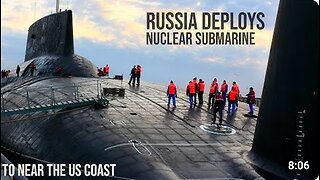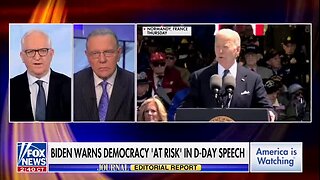DECADES PROTECTING THE SOUTH KOREAN BORDER AND WE CAN'T EVEN PROTECT OUR OWN!!
DECADES PROTECTING THE SOUTH KOREAN BORDER AND WE CAN'T EVEN PROTECT OUR OWN SOUTH BORDER!!!
The 38th parallel north—which divides the Korean Peninsula roughly in half—was the original boundary between the United States and Soviet Union's brief administration areas of Korea at the end of World War II. Upon the creation of the Democratic People's Republic of Korea (DPRK, informally "North Korea") and the Republic of Korea (ROK, informally "South Korea") in 1948, it became a de facto international border and one of the most tense fronts in the Cold War.
Both the North and the South remained dependent on their sponsor states from 1948 to the outbreak of the Korean War. That conflict, which claimed over three million lives and divided the Korean Peninsula along ideological lines, commenced on 25 June 1950, with a full-front DPRK invasion across the 38th parallel, and ended in 1953 after international intervention pushed the front of the war back to near the 38th parallel.
In the Armistice Agreement of 27 July 1953, the DMZ was created as each side agreed to move their troops back 2,000 m (1.2 miles) from the front line, creating a buffer zone 4 km (2.5 mi) wide. The Military Demarcation Line (MDL) goes through the center of the DMZ and indicates where the front was when the agreement was signed.
Owing to this theoretical stalemate, and genuine hostility between the North and the South, large numbers of troops are stationed along both sides of the line, each side guarding against potential aggression from the other side, even 70 years after its establishment. The armistice agreement explains exactly how many military personnel and what kind of weapons are allowed in the DMZ. Soldiers from both sides may patrol inside the DMZ, but they may not cross the MDL. Sporadic outbreaks of violence in and around the border have killed over 500 South Korean soldiers, 50 American soldiers and 250 North Korean soldiers along the DMZ between 1953 and 1999.[4]
Daeseong-dong (also written Tae Sung Dong and known as “Freedom Village”), in South Korea, and Kijŏng-dong (also known as the "Peace Village"), in North Korea, are the only settlements allowed by the armistice committee to remain within the boundaries of the DMZ.[5] Residents of Tae Sung Dong are governed and protected by the United Nations Command and are generally required to spend at least 240 nights per year in the village to maintain their residency.[5] In 2008, the village had a population of 218 people.[5] The villagers of Tae Sung Dong are direct descendants of people who owned the land before the 1950–53 Korean War.[6]
To continue to deter North Korean incursion, in 2014 the United States government exempted the Korean DMZ from its pledge to eliminate anti-personnel landmines.[7] On 1 October 2018, however, a 20-day process began to remove landmines from both sides of the DMZ.[8]
-
 1:01:26
1:01:26
The Truth Central
29 days agoThe Truth About the CCP's Bioweapons Research and Measures Taken to Hide it with Dr Li-Meng Yan
7431 -
 6:36
6:36
galacticstorm
29 days agoGov Greg Abbott: There's Been NO Change At The Border Since Biden's EO
425 -
 21:52
21:52
deNAZIfication - Special Military QperationZ WORLDWIDE
28 days agoDouglas Macgregor Exposes: "Russia Unveils New Hypersonic Missile, threaten to U.S & NATO"
2.99K11 -
 8:12
8:12
The Invisible War in DUMBS and UNDERGROUND
29 days agoMAJOR ESCALATION: Russia Has Surrounded The US With Dozens Of Submarines Armed With Nuclear Missiles
7.52K17 -
 2:00
2:00
Reuters
29 days agoNorth Korea warns of new response against South
9192 -
 8:16
8:16
deNAZIfication - Special Military QperationZ WORLDWIDE
27 days agoRussian Navy will receive 50 ships and support vessels in this year, The US Navy must be alert!
3.72K11 -
 8:05
8:05
deNAZIfication - Special Military QperationZ WORLDWIDE
28 days agoRussia Deploys Warships, Including Nuclear Submarine, to Country Bordering the United States
4.02K6 -
 0:39
0:39
christinaaguayo
29 days agoGov. Greg Abbott: Biden Actively Working To Keep Border Wide Open
26 -
 2:45
2:45
Grabien
29 days agoKeane on the Ukraine-Russia War: A Full 84% Is Restricted from Ukraine Firing into the Sanctuary Zone
39 -
 19:34
19:34
The Conflict Report
29 days agoSmall Nations vs. Big Neighbors: Ukraine, Vietnam, and Indonesia's Strategic Defense
13